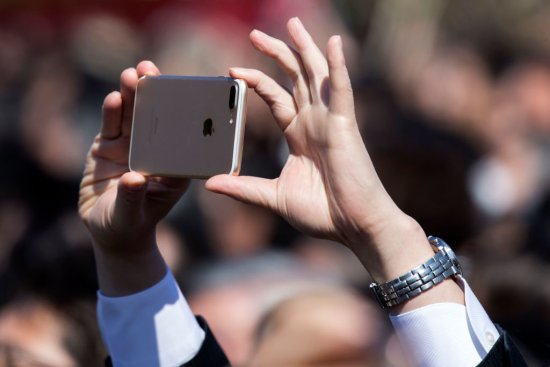
Need to make room for more photos and videos? Here's how
When you get a new iPhone, you almost never think about how much space you’re using. Go ahead and pile up those movies, music and apps. Never delete text messages, save every photo!
But as time goes by, all that content starts to add up. Next thing you know, you’ll be ready to snap a photo of grandma blowing out her birthday candles, and you get the dreaded popup: you’re out of space.
Thankfully, it’s easy to free up space on your iPhone.
First thing’s first: to see what’s taking up space on your iPhone, open up the Settings app. Once in Settings, hit General. From there, you’ll want to select Storage or Storage & iCloud Usage. You’ll see a graph breaking down your device’s storage usage into a few different categories: media, apps, photos, books, messages, and other. Each of the storage categories is assigned a color, so you’ll be able to conceptualize at-a-glance what’s taking up the most space on your phone.
Ready to make some space on your iPhone? Here are three ways to do just that.
Follow Apple’s recommendations
If it’s time to clear out space on your iPhone but you don’t even know where to start, why not ask the phone itself for some ideas?
Under that storage graph in the Storage & iCloud Usage section, your iPhone should show a section of Recommendations. Hit Show All to open them up. Your iPhone will suggest steps like Reviewing iTunes Videos — you can click on this recommendation to see all the iTunes videos you’ve downloaded and select from the list which to keep and which to delete, for example.
Other recommendations are easy to switch on by simply clicking Enable on the right.
Offload unused apps
Under Recommendations, your iPhone also provides an option to Offload Unused Apps. Hitting Enable will allow the device to “offload” applications when you need storage. This option will remove certain apps from your device, but keep their underlying data. That way, if you need to use the app again, you can just re-download it and be off and running like you never deleted it at all.
You can manually offload apps, delete apps, or delete app data manually, too. In the Storage page, you’ll see a list of your installed apps below the recommendations. By clicking on the app in the list, you’ll open an expanded view. There are three options available from there: Offload the app, Delete the app, and others for deleting documents and data.
Use iCloud for storage
Sign in with your Apple ID to automatically turn on iCloud on your iPhone. To access your iCloud settings, navigate to Settings, hit your user ID, then tap iCloud. From there, you’re able to see the storage available for you on iCloud, with a bar graph similar to the one from your device’s Storage page. In the section titled Apps using iCloud, you can flip a switch to choose which categories of apps — Calendars, Contacts, Mail, Photos, etc. — automatically upload their data to iCloud.
All iPhone users automatically get 5GB of storage for free. If that’s not enough storage for you, you can pay for extra storage, starting at $0.99 for 50GB.
Correction, Aug. 8
The original version of this story misstated what happens to information that’s stored on iCloud when it’s deleted from your phone. When you delete information on your phone, it’s also deleted from iCloud.